Disclosure: This article contains affiliate links. We may earn a commission from purchases at no extra cost to you, which helps our travel content.
When my buying trip to Jakarta unexpectedly freed up a week in my schedule, I made an impulsive decision that would forever change my palate: I booked a flight to East Timor. This tiny Southeast Asian nation, independent only since 2002, remains one of the region's most overlooked destinations—especially for food travelers. Maliana, a mountain-flanked market town in the western highlands, became my culinary base camp. Far from the luxury boutiques and fashion showrooms I typically navigate, I found myself wandering through vibrant open-air markets where the fabrics weren't on mannequins but rather wrapped around the waists of women selling the most aromatic spices and freshest produce I've ever encountered. What followed was seven days of flavor exploration that cost less than a single designer dinner in Tokyo, yet delivered experiences that no Michelin star could replicate. This is my story of discovering Timor's soul through its kitchens—where Portuguese colonial influence meets indigenous Austronesian traditions in a symphony of unexpected flavors.
Navigating Maliana's Market Culture
If you've browsed Milan's Quadrilatero della Moda, you understand the thrill of the hunt. Maliana's central market delivers that same dopamine hit, but with ingredients instead of Italian leather. The market operates on a cadence that feels both chaotic and perfectly choreographed—much like fashion week, but with significantly lower price tags.
I arrived at dawn on my second day, armed with my travel journal and a handful of basic Tetun phrases I'd frantically memorized the night before. The market unfolds in concentric circles: produce on the periphery, dry goods and spices in the middle rings, and prepared foods at the heart. Unlike the curated displays of department stores, nothing here is arranged for aesthetic appeal—yet everything possesses an authentic beauty that no visual merchandiser could improve upon.
The star attraction is undoubtedly the spice section, where mounds of freshly ground turmeric, ginger, galangal, and chili create a color palette that would make any trend forecaster swoon. These aren't packaged in sterile containers but rather piled high in woven baskets, sold by weight and wrapped in banana leaves—zero-waste packaging that predates our sustainability buzzwords by centuries.
What struck me most was the textile connection—many vendors displayed their goods on traditional tais cloths, the same vibrant handwoven fabrics I'd researched during my undergraduate studies. Here, fashion and food culture intertwine in ways I never expected, each informing and elevating the other.
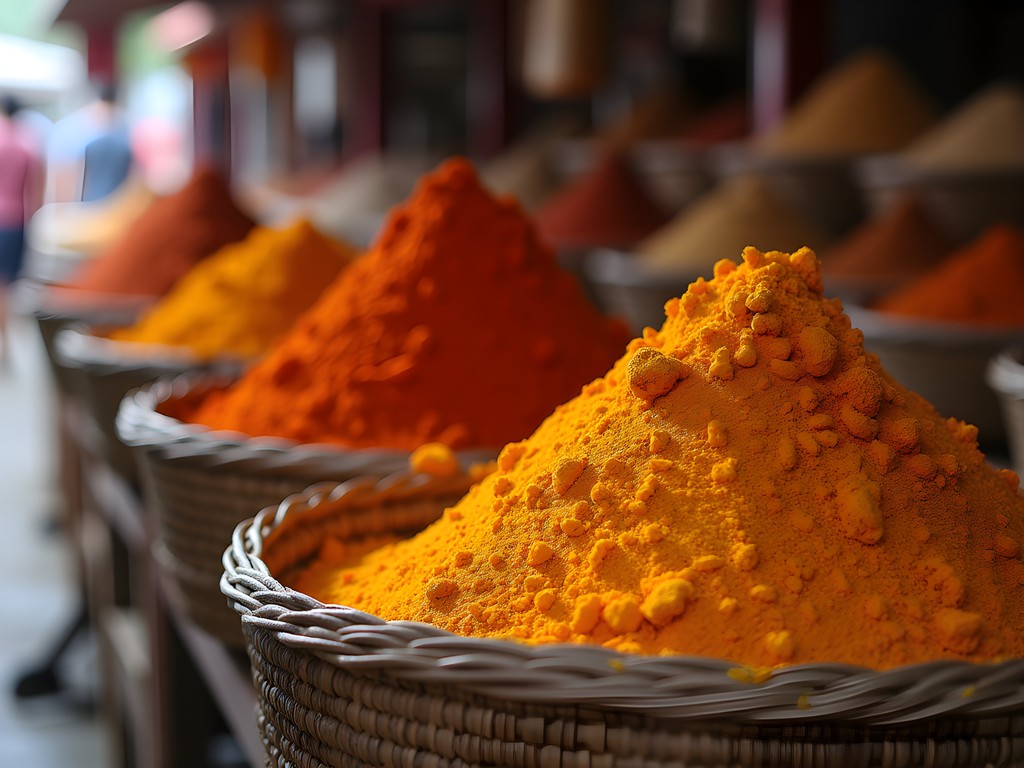
💡 Pro Tips
- Arrive before 7 AM for the freshest selection and to beat the midday heat
- Bring small denomination US dollars—they're widely accepted alongside Timorese currency
- Learn basic counting in Tetun to negotiate prices respectfully
The Portuguese Colonial Influence: Fusion Before It Was Trendy
Long before fusion cuisine became the darling of metropolitan restaurants, East Timor was perfecting the blend of Portuguese colonial flavors with indigenous ingredients. This small nation spent nearly 500 years under Portuguese rule, and that European influence is evident in every bite—though transformed by necessity and creativity into something entirely unique.
In Maliana, I connected with Maria, a local grandmother whose outdoor kitchen became my culinary classroom for two afternoons. Her hands moved with the practiced precision of a master craftsman, reminding me of the artisans I've watched in leather workshops across Italy. The difference? Her materials were cassava leaves, coconut milk, and the freshest seafood I've ever handled.
"Portuguese brought the technique, Timor gave the flavor," she explained while teaching me to make caril, a curry that bears little resemblance to its Indian namesake. The Portuguese colonial influence appears in the base techniques—slow sautéing, layering of flavors—while indigenous ingredients like ai-manas (Timorese chilies) and ai-parapa (a local basil variety) transform these European methods into something distinctly Timorese.
The crown jewel of this fusion is undoubtedly koto, a red bean stew that shares DNA with Portugal's feijoada but incorporates local aromatics and is traditionally served with rice rather than bread. I spent an entire morning helping Maria prepare this dish, crushing garlic with a stone pestle that had been in her family for generations—a tool more precious than any designer accessory I've ever coveted.
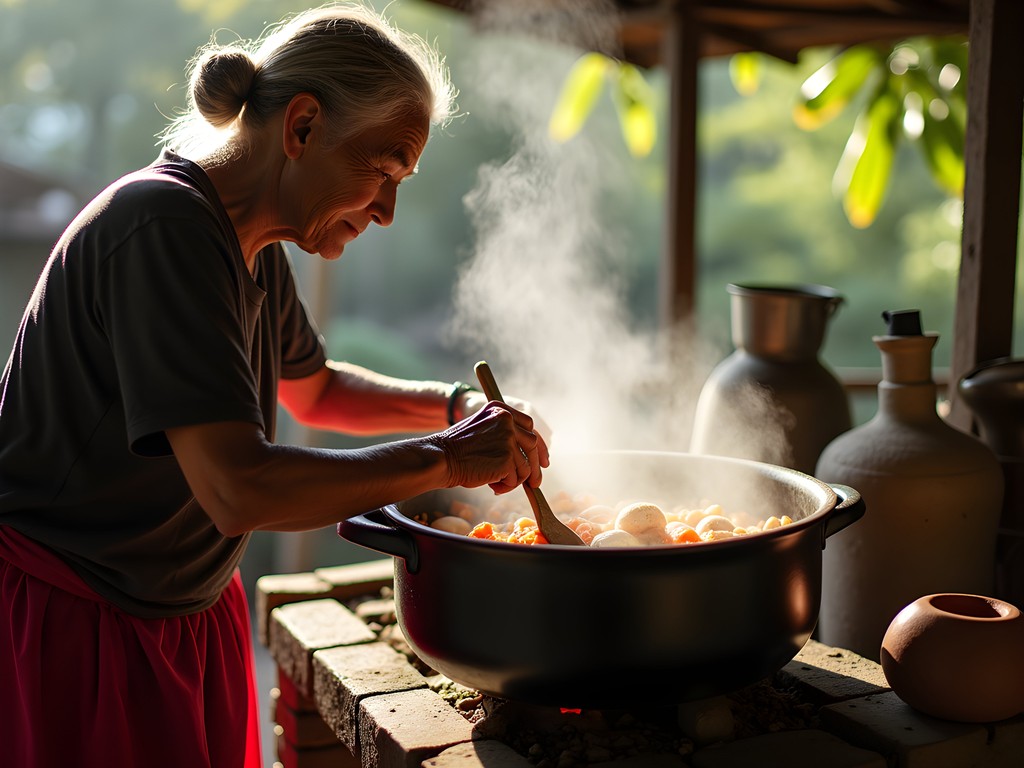
💡 Pro Tips
- Ask permission before photographing home cooks or their setups—many are happy to share but appreciate being asked
- Bring small gifts like coffee or tea when visiting local homes for cooking lessons
- Don't rush the cooking process—many traditional dishes require slow simmering to develop proper flavors
Coffee Culture: Timor's Hidden Luxury Export
If there's one product category where East Timor deserves global recognition, it's coffee. The highlands around Maliana produce some of Southeast Asia's most distinctive arabica beans, yet most are exported unmarked, blended into commercial products that never acknowledge their origin. For a retail buyer like me who obsesses over provenance and authenticity, this anonymity feels like fashion's equivalent of removing designer labels from couture pieces.
I spent a day with coffee farmers in the hills above Maliana, where coffee grows in partial shade beneath towering hardwood trees. Unlike the manicured coffee plantations I've visited in Colombia and Ethiopia, Timorese coffee cultivation feels almost wild—organic by necessity rather than certification. The farmers harvest and process beans using methods unchanged for generations, drying them on woven mats in the mountain air.
The resulting cup profile is extraordinary—notes of dark chocolate and black cherry with a distinctive earthy finish that would command premium prices in specialty cafes worldwide. Yet most farmers sell to middlemen at fraction of fair value, lacking direct market access.
In Maliana town, I discovered a small cooperative where women roast beans in small batches over wood fires, turning them constantly with a paddle to ensure even heat distribution. I brought my hand grinder along on this trip specifically hoping to bring home beans, and it proved to be the perfect conversation starter. When the women saw me grinding fresh beans each morning at my guesthouse, they invited me to join their roasting session.
The experience reinforced something I've observed across fashion and food: true luxury isn't about branding or price—it's about connection to origin, production methods, and the hands that create.
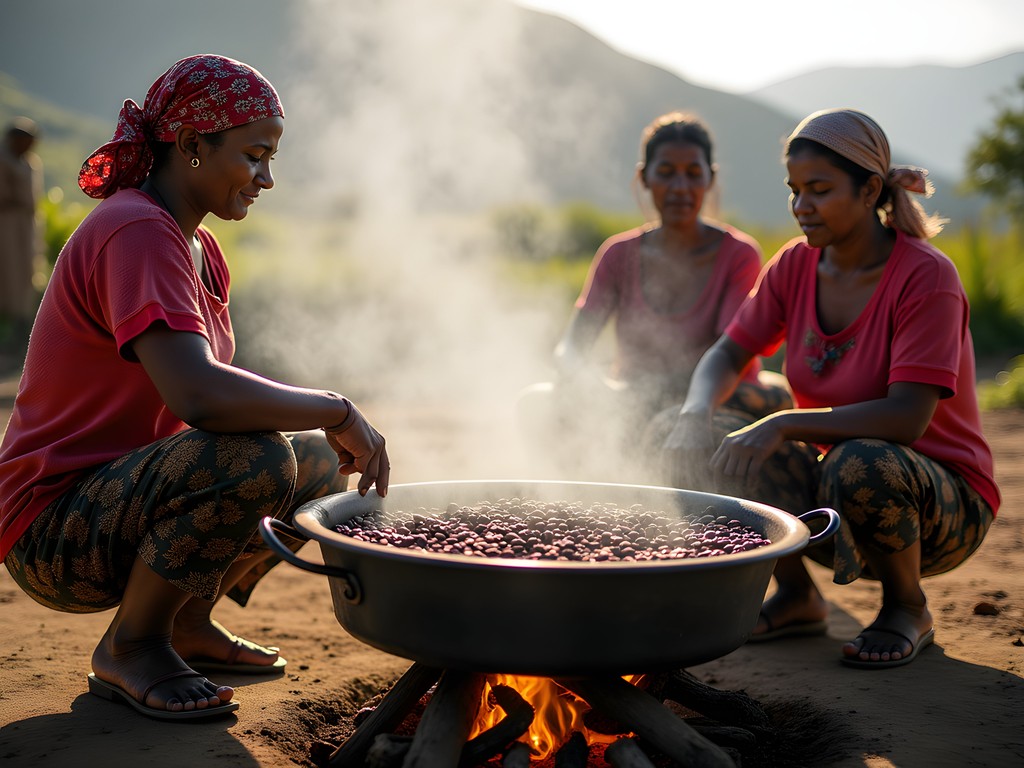
💡 Pro Tips
- Buy coffee directly from producers or cooperatives when possible to ensure fair compensation
- Look for beans labeled 'Timor Hybrid'—a naturally occurring cross between arabica and robusta varieties unique to the region
- Pack coffee in vacuum-sealed bags to preserve freshness during travel
Beyond Rice: The Staple Foods Redefining Comfort
If you asked me before this trip to name East Timorese staple foods, I'd have defaulted to the standard Southeast Asian answer: rice. While rice certainly features prominently, Maliana introduced me to a diverse carbohydrate landscape that challenges Western notions of staple foods.
Corn (batar) plays a starring role in Timorese cuisine, appearing in forms ranging from roasted young ears to dried kernels ground into meal. The signature dish batar da'an combines corn with mung beans in a stew-like consistency that serves as both breakfast and dinner food. After trying it with fresh coconut milk at a roadside warung, I found myself craving it each morning—a surprising shift for someone who typically starts days with espresso and not much else.
Cassava (ai-farina) appears in numerous preparations, but the most fascinating is koto, where the root is fermented underground for days before being unearthed, dried, and pounded into flour. The slightly sour notes this process creates provide a perfect counterbalance to rich stews. When I mentioned to my host that the technique reminded me of how certain luxury leather goods are treated to develop character, she laughed and said, "But we've been doing this for centuries."
Perhaps most surprising was my introduction to sago palm—not the processed pearls familiar from Asian desserts, but the starchy pith extracted from palm trunks. In remote villages outside Maliana, I watched families process this traditional carbohydrate source through an elaborate sequence of extraction, washing, and drying that yields a versatile flour used in everything from puddings to flatbreads.
I recorded each preparation method in my waterproof notebook, which proved invaluable during unexpected afternoon downpours as I documented recipes I hope to recreate back home.

💡 Pro Tips
- Try batar da'an for breakfast at local eateries—it's typically served only in the morning hours
- Look for ai-farina dishes that use the fermented cassava preparation method for the most authentic flavors
- Ask locals to demonstrate proper eating techniques for communal dishes—there are often specific customs around sharing food
Cooking with Fire: The Original Slow Food Movement
In fashion, we often talk about artisanal techniques and slow craftsmanship as luxury selling points. In Maliana, I discovered the original slow food movement—cooking methods that haven't changed in centuries and require nothing but fire, patience, and expertise.
Unlike the gas stoves and electric appliances that dominate Western kitchens, cooking in Maliana revolves entirely around fire management. Different dishes require specific heat levels, achieved not by turning knobs but by arranging wood and coals with precision. The skill reminded me of watching master tailors in Milan who know exactly how much pressure to apply to different fabrics—an intuitive knowledge no machine can replicate.
The most impressive demonstration came when I joined a community feast preparing tukir, a method where meat is cooked inside bamboo tubes placed directly in hot coals. The preparation begins at dawn, with men splitting bamboo while women prepare marinades of chili, ginger, and coconut milk. The sealed bamboo tubes slowly roast for hours, infusing the meat with smoky flavor and bamboo essence.
Equally fascinating was watching sanan tanan (clay pot cooking), where earthenware vessels are nestled into embers for slow, even heat distribution. These unglazed pots, made locally from river clay, impart a mineral quality to stews and broths that no commercial cookware could match. I was so impressed that I carefully wrapped one to bring home, though I doubt my electric stove will do it justice.
The reverence for fire extends to preservation techniques as well. Fish and meat are often smoked over smoldering coconut husks, creating intensely flavored proteins that can be stored without refrigeration. The resulting products—especially smoked fish—become flavor foundations for countless dishes, demonstrating how necessity breeds culinary innovation.
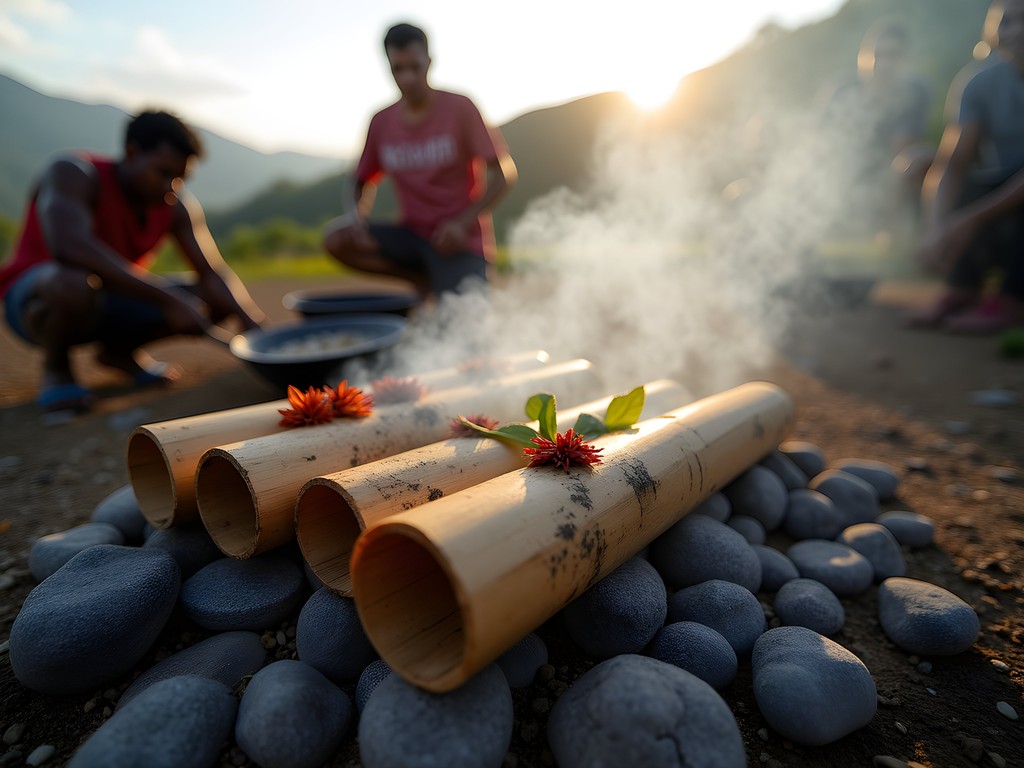
💡 Pro Tips
- Participate in a community cooking event if invited—these are valuable cultural exchanges, not tourist activities
- Learn basic fire management techniques from locals if you plan to try outdoor cooking
- Respect the time investment of traditional cooking methods—never rush hosts or suggest faster alternatives
Final Thoughts
As my week in Maliana drew to a close, I found myself lingering over a final cup of hand-roasted coffee, reluctant to leave this culinary frontier that had so thoroughly recalibrated my understanding of authentic food experiences. What struck me most wasn't just the flavors—though they were extraordinary—but the unbroken connection between food, culture, and daily life. In Maliana, cooking isn't performance or entertainment; it's living heritage. For travelers willing to venture beyond East Timor's more visited coastal areas, Maliana offers a rare glimpse into culinary traditions untouched by tourism's homogenizing influence. Pack light, bring an open palate, and prepare to experience flavors that no trendy restaurant could possibly replicate. The fashion world taught me to recognize craftsmanship and authenticity—Maliana showed me their purest expressions.
✨ Key Takeaways
- East Timor's cuisine represents one of Southeast Asia's last undiscovered culinary frontiers
- Portuguese colonial influence created unique fusion dishes centuries before 'fusion cuisine' became trendy
- Traditional cooking methods using fire and fermentation create flavors impossible to replicate with modern techniques
- Maliana's markets offer an authentic food shopping experience with ingredients sourced directly from surrounding farms
📋 Practical Information
Best Time to Visit
April-May (late spring, after rainy season)
Budget Estimate
$30-50 per day including accommodation, food and local transport
Recommended Duration
5-7 days
Difficulty Level
Moderate


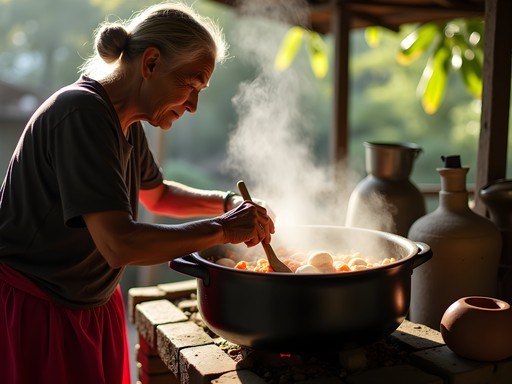

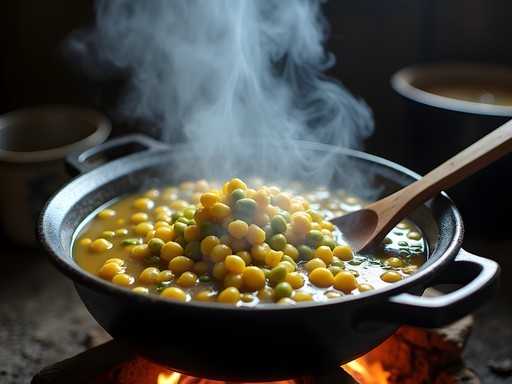
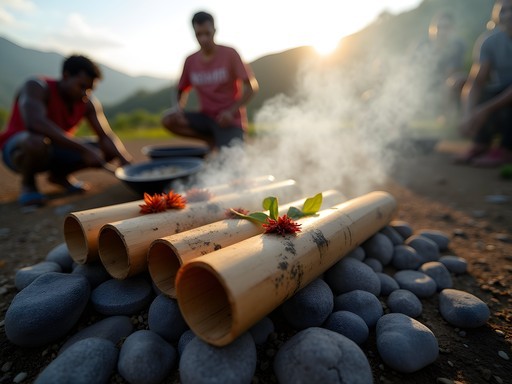







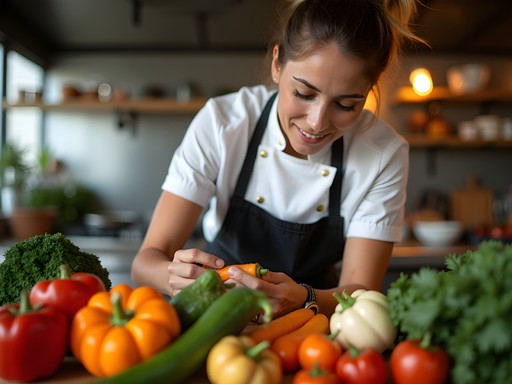

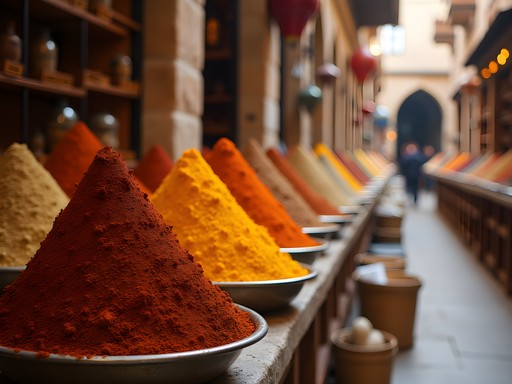
Comments
smartway
Is it expensive to eat there? Planning a budget trip through SE Asia next year!
Jose McDonald
It's actually very affordable! Market meals were $2-3, and even the nicest restaurant I found was under $15 for a feast. The coffee is incredibly cheap considering the quality!
Jean Wells
Jose, what a refreshing piece on a culinary landscape that rarely gets international attention. Having spent three decades exploring Southeast Asian food traditions, I found your observations on the Portuguese colonial influence particularly astute. The fusion elements in Maliana's cuisine predate our modern obsession with fusion cooking by centuries, developing organically through trade and settlement patterns. One element I'd add to your excellent analysis is the fascinating preservation techniques used for seafood in coastal East Timorese communities - methods that likely date back to pre-colonial times but adapted with Portuguese salt-preservation knowledge. The resulting fermented fish pastes create that distinctive umami foundation in many dishes you described. Your market navigation tips are spot-on. I've found that early morning (5-6am) visits offer the most authentic experience before the tourist crowds (small as they may be in Maliana).
Nicole Russell
Jean, I'm fascinated by your mention of the fermented fish pastes! I tried something that might have contained this but didn't know the history. Do you have any recommendations for specific dishes that showcase this ingredient well?
Jean Wells
Nicole, look for 'ikan saboko' - it's a steamed fish dish where the fermented paste is used as both marinade and sauce base. The coastal version differs from the inland preparation you might find in Maliana, but both are excellent windows into traditional techniques!
globeone
That coffee sounds amazing! Adding to my list!
wanderlustking
This is exactly the kind of off-the-beaten-path place I love reading about! I've been researching Southeast Asia trips but never considered East Timor. The way you described that market experience and the fusion of Portuguese and local flavors sounds incredible. I've been using Skyscanner to check flights from Singapore to Dili - seems like there are some decent options. How many days would you recommend for Maliana specifically?
Jose McDonald
I'd say 3-4 days in Maliana is perfect. Gives you enough time to explore the markets, try different restaurants, and maybe take a day trip to see some coffee farms. The pace is slow there, which is part of the charm!
Nicole Russell
Jose, your post brought back so many memories! I visited Maliana last year and was equally blown away by the coffee culture. That ritual of hand-roasting beans right in front of you is something I still dream about. Did you get a chance to try the fish preparation with the coconut and lime leaves? It was life-changing for me. Also, the Portuguese pastries with local tropical fruit fillings? I literally took a cooking class just to learn how to make them at home! Your section on market etiquette was spot-on - those relationships with vendors really make the experience special.
Jose McDonald
Nicole - yes to all of it! The fish dish you mentioned was called 'ikan kohu' at the place I tried it. And those pastries! I brought home some coffee beans but wish I'd taken a cooking class too. Great idea!
smartguide
That shot of the sunrise over the coffee plantation is absolutely stunning! What camera did you use?
Jose McDonald
Thanks! Just my trusty old Fuji X-T3. The light in Maliana does all the work - I just had to wake up early enough to catch it!
bluemate
This looks amazing! How difficult was it to get around Maliana if you don't speak the local language?
Jose McDonald
It was actually easier than I expected! Most people in the hospitality industry speak some English, and Portuguese is still widely understood. I found that food became my universal language - pointing and smiling got me through most situations!
bluemate
That's good to know! Adding this to my bucket list for sure.
dreamway
Wow! Never even thought about East Timor as a food destination. Those market photos are incredible!
sunnytime3577
Heading to East Timor next month! How difficult was it getting around Maliana if you don't speak the language? And where did you find the best coffee to bring home?
Jose McDonald
Language wasn't a huge barrier - many people speak basic English or Portuguese. I found Google Translate with Tetum helpful for specific food items. For coffee, visit the Saturday market - there's a vendor named Paulo at the north entrance with the freshest beans. Bring a vacuum sealed container to keep it fresh during travel!
sunnytime3577
Thanks for the tip! Will definitely look for Paulo at the market. Can't wait to try that coffee!
Jean Wells
Jose, your analysis of Portuguese colonial influence on Timorese cuisine is fascinating. Having documented culinary evolution across former colonies in Southeast Asia, I find Maliana particularly interesting as it's preserved traditional techniques while incorporating foreign elements more organically than places with heavy tourism. The market culture section reminded me of my visits to rural Portuguese villages where similar communal trading practices persist. I'd be curious about your observations on how the younger generation relates to these traditional foods - in my experience, this is where you can see whether a culinary tradition will survive modernization. Did you notice any contemporary adaptations of classic dishes?
Jose McDonald
Great observation, Jean. I did notice younger chefs adding subtle twists - one restaurant served a deconstructed batar da'an with Japanese-inspired plating, while preserving all traditional ingredients. The coffee scene especially seems to be embracing modern preparation methods while celebrating local beans. There's definitely a pride among younger Timorese in reclaiming these foods as symbols of national identity.
Venture X
Premium card with 2X miles, $300 travel credit, Priority Pass